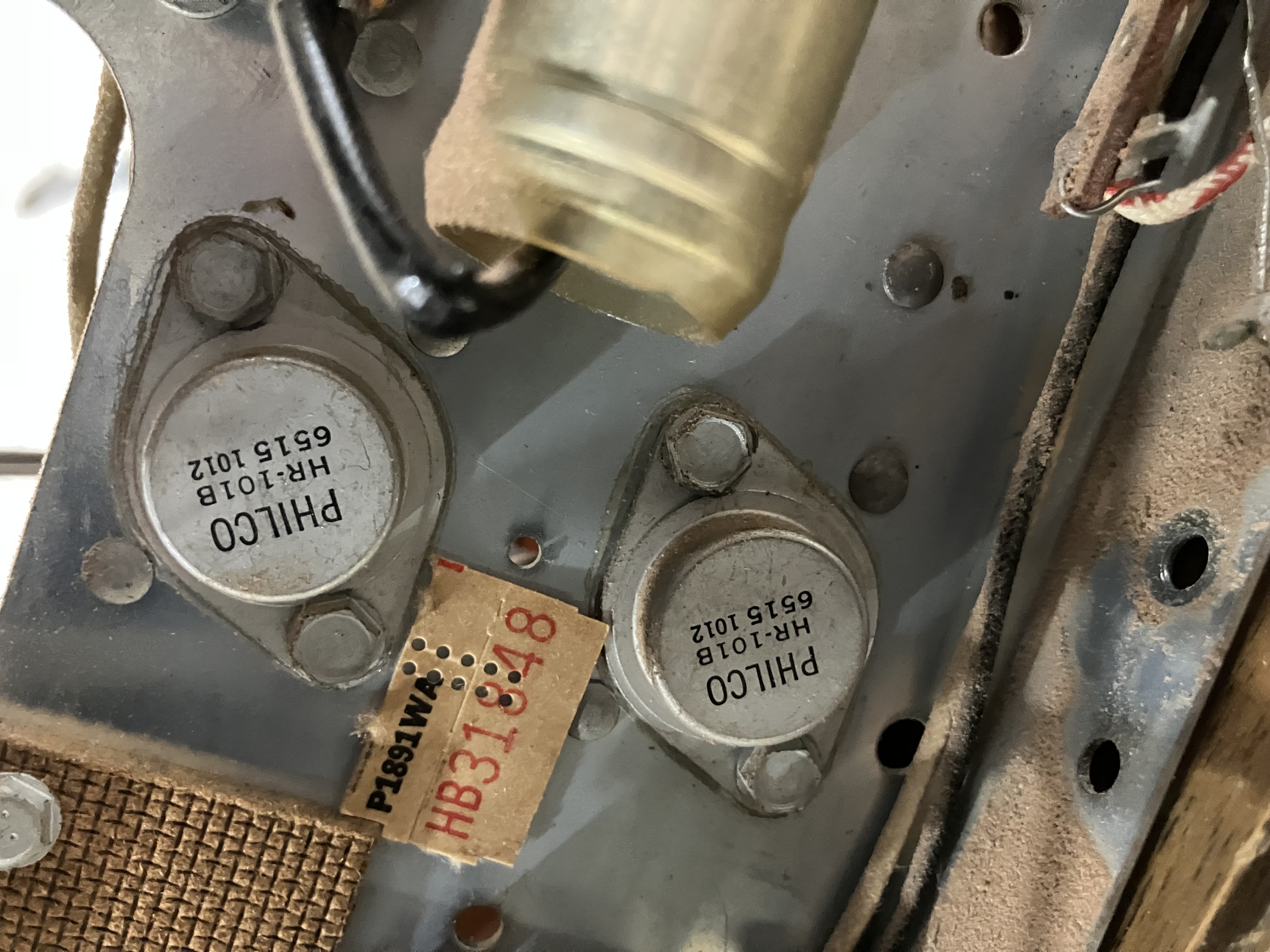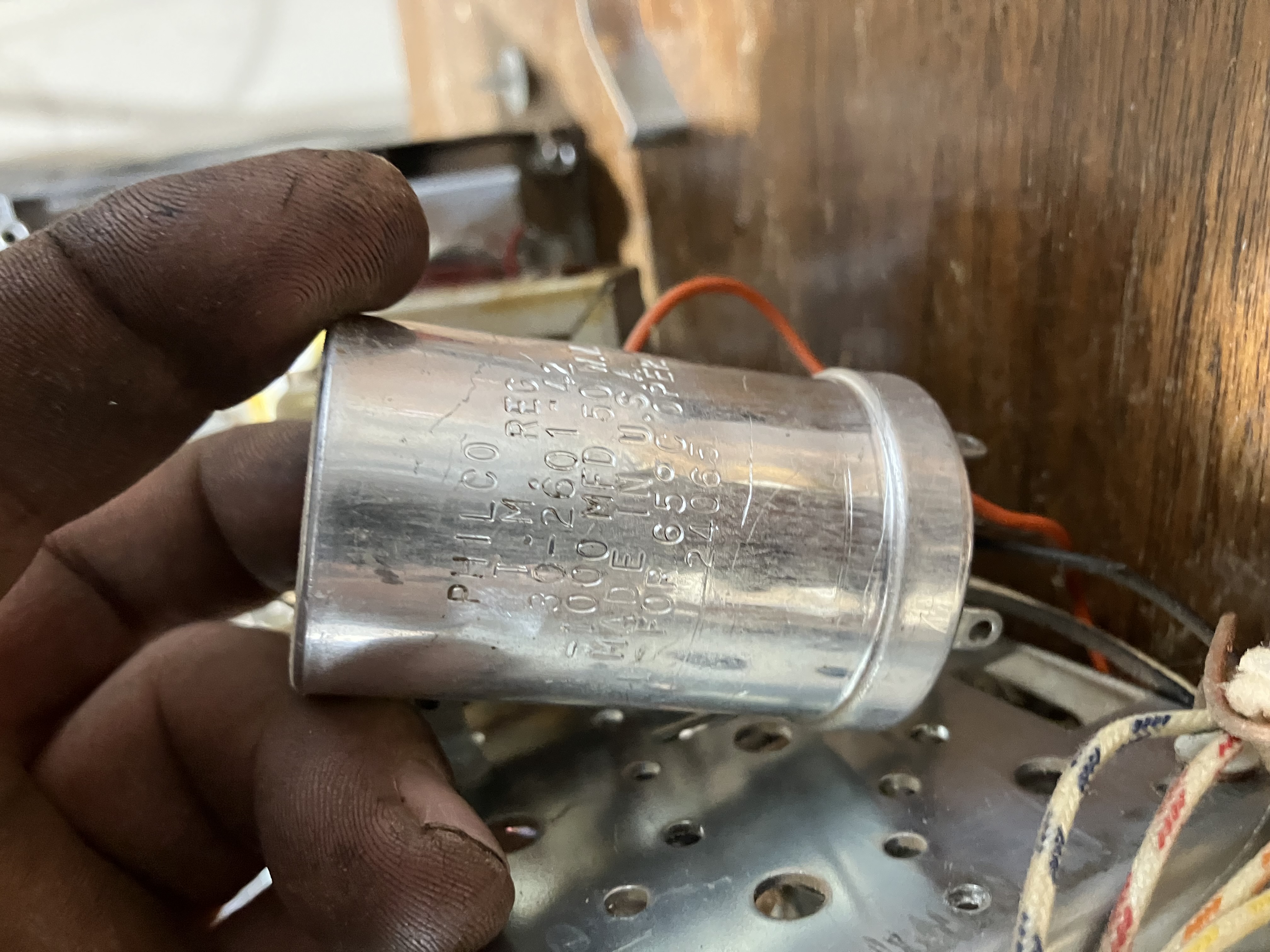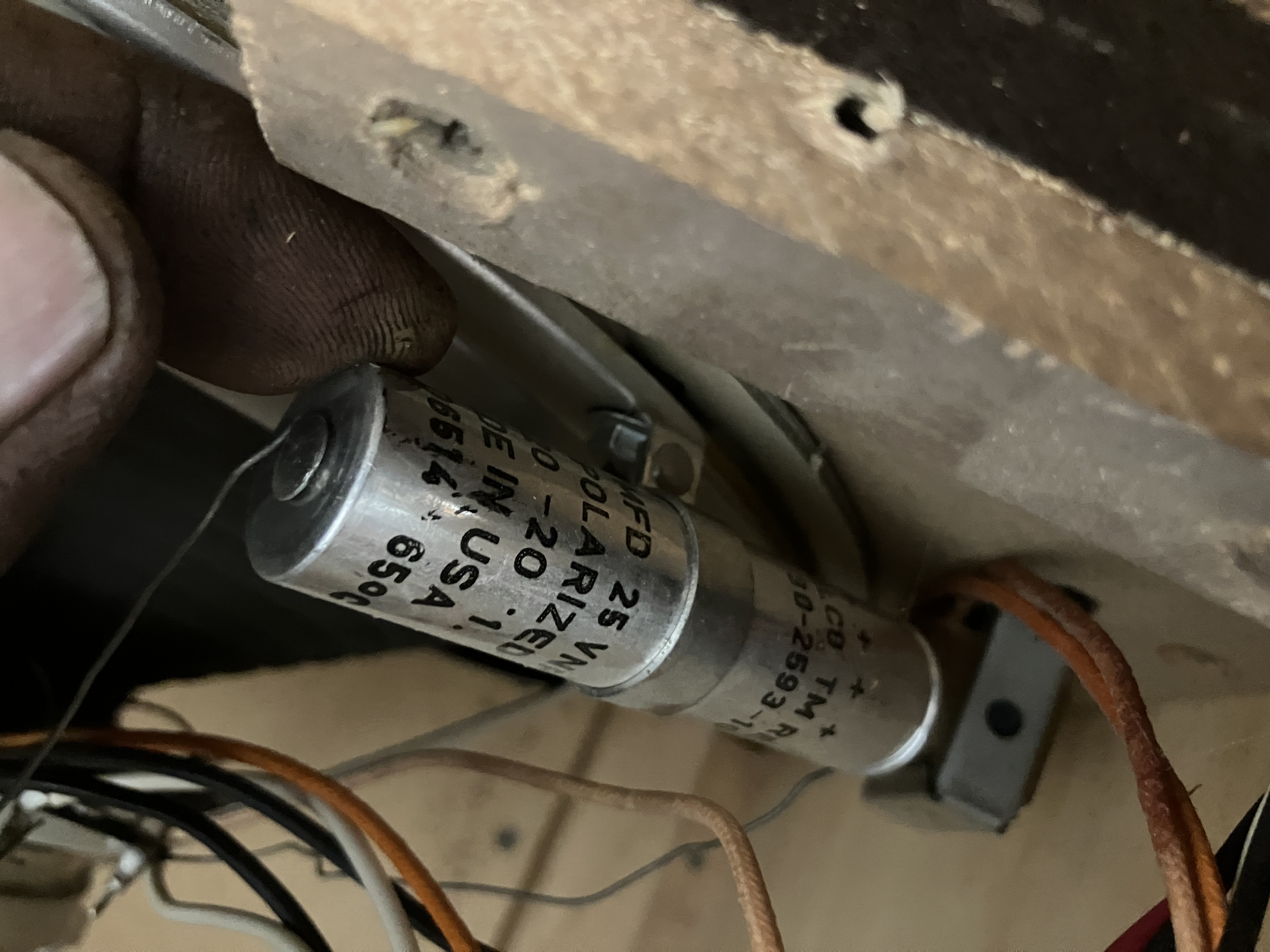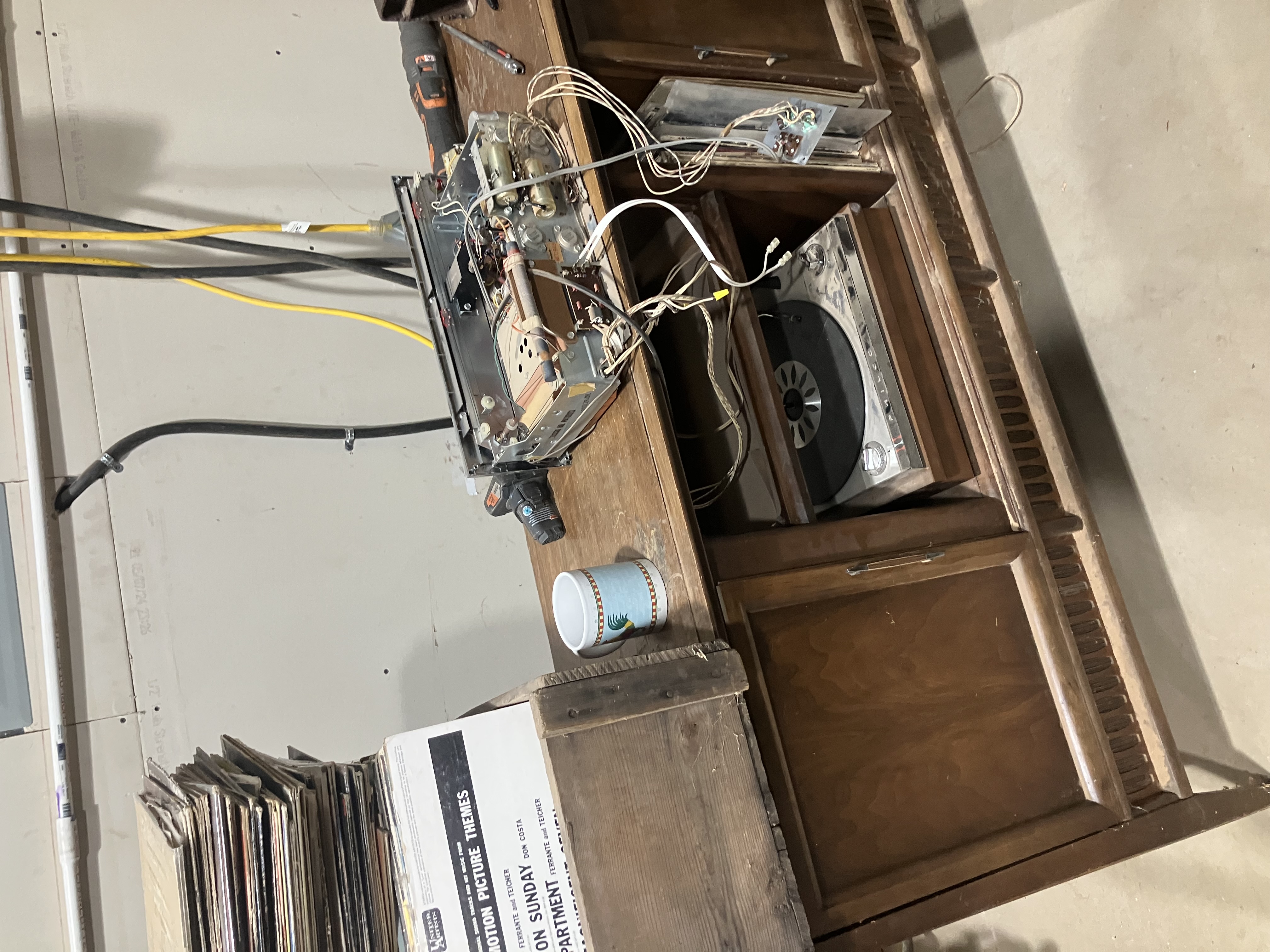Yesterday, 04:54 PM
I’m very new to vintage solid state repair and have many questions but will stick to some broad descriptions of what’s going on with this unit and what I’ve done so far.
The thing “works” as in it puts out sound from both radio and record player but the sound is … muffled, crackly, and all around weak. I’ve contact cleaned the potentiometers and got less “crackle” so happy with that.
My internet research has taught me terms like recapping, output transistors, speaker coils, speaker capacitors, transformers, etc. I am gleaning consistent info suggesting replacing power in and speaker capacitors, checking output transistors, and cleaning speaker coils.
Sound like a good place to start?
If so, how do I know if my output transistors are “NPN” or”PNP”? They are labeled philco HR101B 6515 1012. And what is a good way to insulate the base of them back to the heat sink? Also, they just pull out, the leads are not soldered to anything. Problem? Or normal?
Also don’t know how to check speaker coils besides if they are shorted. Can’t find info on if they’re wearing out (do they?) Anyway, that seems to be a good start. I’ll try to get my 10 yr old daughter to show me how to post photos if deemed necessary!
Thanks




The thing “works” as in it puts out sound from both radio and record player but the sound is … muffled, crackly, and all around weak. I’ve contact cleaned the potentiometers and got less “crackle” so happy with that.
My internet research has taught me terms like recapping, output transistors, speaker coils, speaker capacitors, transformers, etc. I am gleaning consistent info suggesting replacing power in and speaker capacitors, checking output transistors, and cleaning speaker coils.
Sound like a good place to start?
If so, how do I know if my output transistors are “NPN” or”PNP”? They are labeled philco HR101B 6515 1012. And what is a good way to insulate the base of them back to the heat sink? Also, they just pull out, the leads are not soldered to anything. Problem? Or normal?
Also don’t know how to check speaker coils besides if they are shorted. Can’t find info on if they’re wearing out (do they?) Anyway, that seems to be a good start. I’ll try to get my 10 yr old daughter to show me how to post photos if deemed necessary!
Thanks



![[-] [-]](https://philcoradio.com/phorum/images/bootbb/collapse.png)


